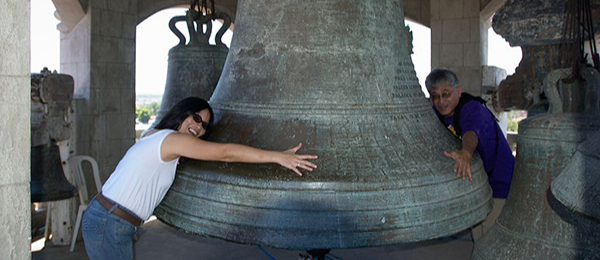
New concepts and technical principles are sometimes best explained using analogies that relate to something already familiar. Here, QCM-D technology is explained using a set of different musical instruments.
QCM-D is an acoustic technology, i.e. based on measurements of sound energy. Therefore, it is intuitive to use musical instrument analogies to explain the QCM-D working principle. To understand the fundamentals of the QCM-D technology, there are a few key concepts that must be understood:
In the webinar Basics of QCM-D, I explain these three concepts using the below instruments
In brief, picturing these musical instruments, how they work and how they interact with their surroundings, we learn the following:

When vibrating, the quartz crystal acts like a guitar string. It would be a short and thick guitar string, only ~0.3 mm long, but it behaves in the same way. To induce a tone, the sensor is stimulated with electricity. Like a guitar string, if the string is made longer, the tone will be lower and if the string is made shorter, the tone will be higher. It is the same for the QCM-sensor, i.e. if the sensor is made thicker, by adding material, the tone will be lower, and if it is made thinner, by removing or desorbing material, the tone will be higher. The QCM sound is in the MHz regime, but it is the same phenomenon as the guitar string.

If you hit a church bell that is mounted in an undampened mounting, it will ring for a very long time. If the ringing motion is dampened, however, for example by some friendly tourists giving the church bell a hug, the sound will decay faster. You can think of the hugging tourists acting like an added soft film which dampens the sound signal. In that sense, the church bell can sense its environment. If it interacts with a rigid film, or no film at all, which would be the case when its is ringing in air, the dissipation will be low, and it will ring for a long time. If it interacts with a soft film, or if a friendly tourist gives it a hug, the energy will dissipate quicker and the ringing will be a short sound.
Since we are dealing with sound waves and acoustics, we can use physical formulas for how sound waves, i.e. pressure waves, distribute through films with different material properties to establish physical models that will help us understand the relation between the sound and the material properties. For example, the viscoelastic model describes how the pressure wave moves in a layer with certain viscoelastic properties. Measuring the sound, we can then use the model to calculate what the viscoelastic properties of the layer are.
With this model in mind, we can compare QCM-D to an electric organ. The organ can produce different tones of different qualities, and so can QCM-D. We measure the different tones and listening to the different harmonics is like listening to different qualities of the sound. So, the different keys, the different tones, of the electrical organ would correspond to different thicknesses of the film on the sensor, of the mass change. Add to this the possibility of changing the quality of the sound by using the different knob settings. For example, changing from a piano sound to a trumpet or saxophone sound. This would then represent different qualities of the material and how the different harmonics behave. So, in that aspect we can say that QCM-D is like an electric organ.
With these analogies in mind, we can better understand the principles of QCM-D technology. To learn more about QCM-D, watch the webinar to delve deeper into the fundamentals of the technology, the theory behind it, and what you can measure and analyze.
Editor’s note: This post was originally published in August 2020 and has been updated.
Learn best practices and step-by-step methods for accurate QCM-D coating thickness measurement on QSense sensors using QSense Omni.
Compared to QCM, QCM-D measures an additional parameter, and provides more information about the system under study.
Discover how QCM-D analysis reveals real-time etching dynamics, helping optimize cleaning processes and protect surfaces from unwanted damage.
Discover how QSense QCM-D helps tackle fouling challenges across industries
Discover how QCM-D enables real-time, label-free analysis of supported lipid membrane formation, structure, and dynamics for advanced research
Learn how QSense QCM-D analysis can reveal membrane fouling dynamics and optimize cleaning strategies for more efficient water treatment
Learn how QSense QCM-D helps detect and prevent surface-induced instabilities in biologics. Join our webinar for insights and practical examples.
Learn about the top QSense sensors for analyzing biopharmaceutical drug-surface interactions in the context of IV bags.
Learn about QCM-D, Quartz Crystal Microbalance with Dissipation monitoring - an analytical tool for surface interaction studies at the nanoscale.
Explore QSense QCM-D sensors to optimize cleaning efficiency with real-time insights, enhancing formulations and protocols across various conditions.
Learn how how run small volume measurements with QSense Omni
Fredrik is a Senior Application Scientist at Biolin Scientific. After his Master of Science in Biosensors- and Microsystems technology he has worked with technology and application development in as diverse fields as electroporation, multivariate gas sensing, drug screening and surface science.
